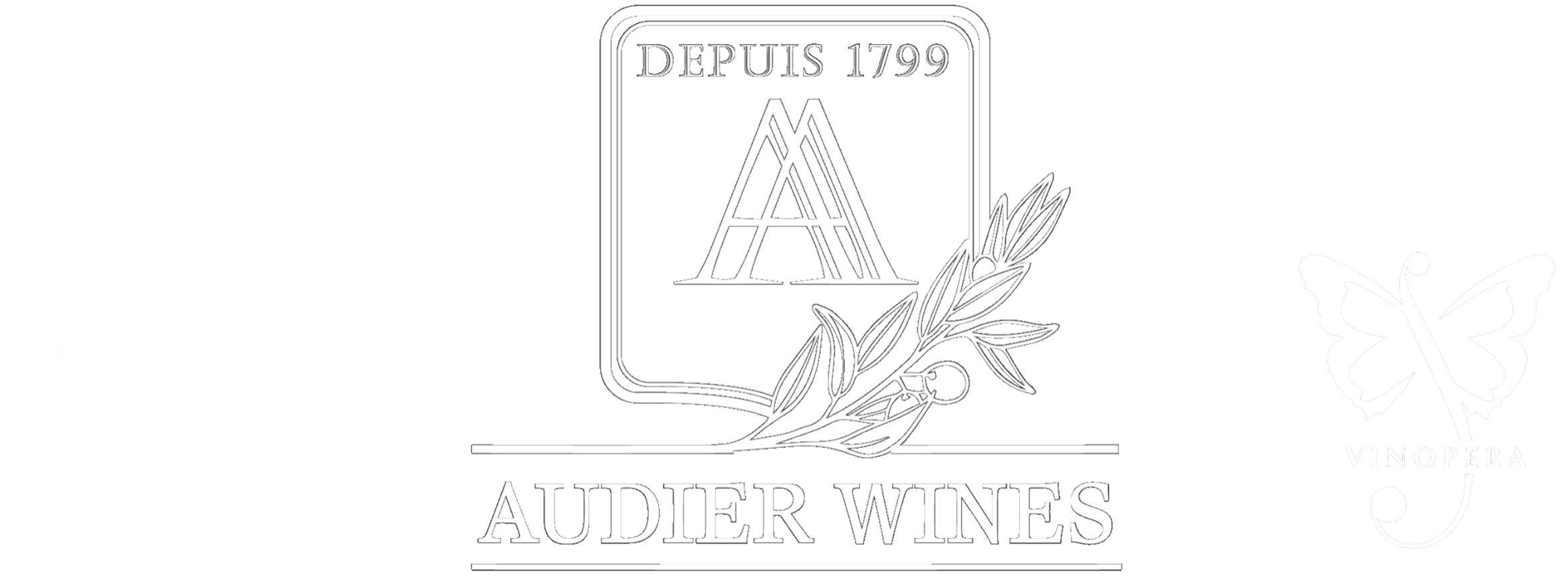Introduction
There is true artisan craftmanship behind growing vines and making wine.
At Château Juliette every endeavour is made to allow nature to express itself to the fullest; low yielding vines, harvested by hand using small crates and sorted by hand, and using age old manual techniques throughout the vinification process…
From the 3-star restaurant in the Michelin guide through the Palazzo Versace (6-star hotel, Gold Coast, Australia), Château Juliette is presented on some of the greatest tables in the world. Nicknamed by journalists the composer of fine wines, these cuvées are also recommended by the greatest sommeliers such as Vincent Gasnier, master sommelier in 1997 and the youngest awarded worldwide.
“The search of elegance is a perpetual quest made possible by the balance and harmony between the different elements that make up each wine”
VITICULTURE
The sandy clay ‘terroir’ of the Laudun area are particularly free-draining, giving the wines freshness and acidity, the key to good balance. Thanks to the sunny Mediterranean climate and the mistral winds, the grapes are harvested at maximum maturity expressing the very best qualities of the grapes, the key to good wine!!
The team harvests manually using small cases and selecting only the best grapes. Hand harvesting fruit is undoubtedly gentler and limits premature damage to the fruit so it will survive the journey in better condition. The vineyards are naturally low yielding maximizing the fruits potential, and planted on sloping land to allow good drainage.
Many of the vines at Château Juliette are more than 100 years old. These parcels are used to create our top range wines such as the Cotes du Rhône Villages Laudun and CRU Lirac. Due to the ancient methods of vine planting the ‘goblet’ styled vines can only be handpicked.
To maximise the qualities of the vines so that they can be expressed within the wines at their fullest Château Juliette respects and nurtures the vineyards minimizing chemical interventions such as weed killers, chemical fertilizers or pesticides.
“Perfect harmony between acidity, alcohol, tannins and above all balance is the composition of a great wine that is perfected through the process of blending”
VInICULTURE
The wines at Château Juliette are known for their elegance and rich aromas. The search for elegance is a perpetual quest made possible by the balance and harmony between the different elements that make up each wine.
1/ The first principle of Chateau Juliette is to consider the grapes. Therefore, all of our vineyards are harvested by hand. The process is gentler on valuable vines and grapes, and it is the only way to ensure to maximum quality. Broken or damaged fruit leads to unwanted bitter phenolics; allowing premature oxidation and destroying delicate aroma molecules. In harvesting by hand, we reduce the use of sulphur during the vinification process. Selection of the fruit starts at the vineyard from which the grapes are transported in small crates and hand sorted in the cellar.
2/ The second principle is to preserve the fruit quality of the grape, taking into account the specifics of the vintage. The key to our success lies in the adaptive approach. Individually the vinification for each harvest, and for each vineyard is assessed. We adapt our approach according the grapes as they are physically different from one year to another in particular according to drought, spring rains, and the severity of winter etc. The wine can be affected by skin thickness, seed ripeness, hardness of the stalks and denseness of the pulp issued to the seasons.
3/ Finally, the third principle, but not the least, is to balance the wines as well as possible with alcohol, tannins and acidity. In order to achieve this, we vinify each plot separately and after the fermentation and aging is completed, we then carry out an intensive blending work with a group of oenologists. Perfect harmony between acidity, alcohol, tannins and above all balance is the composition of a great wine that is perfected through the process of blending.
AGEING
After the malolactic fermentation certain wines are aged in either French or American oak barrels (red wines), or acacia barrels (white wines). These help amplify the fruity aromas. At Château Juliette the barrels serve the fruit and not the other way around. We insist on having the most the most authentic wines possible.
The history of Château Juliette
For more than a century now Château Juliette has been producing quality fine wines in the Rhone Valley.
Château Juliette is the result of 5 generations of winemakers and 3 generations of opera singers. The original property itself dates from 1799. In 1865 Alexandre’s great, great grandfather, Julian Marcelli, was one of the first graduates of agronomy in France. He bought his first parcel in Tresques planting vines that were the most adapted to the Mediterranean climate (Grenache, Cinsault and Syrah) and established his career as a vintner.
However, we say that it is due to Julian’s granddaughter that the property stands as it does today. Juliette Marcelli, prematurely orphaned and widowed at an early age, took over the vineyards with sheer commitment and drive. It was thanks to her connection to the land and dedication to her heritage that she was inspired to follow a vocation previously considered the domaine of men. Juliette managed her vineyards for 30 years, passing on her knowledge, skills and genuine love of the nature to her grandson Alexandre who worked alongside her whenever he was able, even as a child.
In 2005 Alexandre moved to Tresques to live full time and took over the property with his Australian wife Simone. Both Alexandre and Simone completed their studies in Global Installation in Agriculture and developed the original property including the brand itself Chateau Juliette. Today the family business continues to grow and uphold the traditions and aspirations of their ancestors. Their prime land for wine growing along with a long heritage of winemaking leads them to where they stand today, known worldwide for their wines of elegance, character and creativity.

